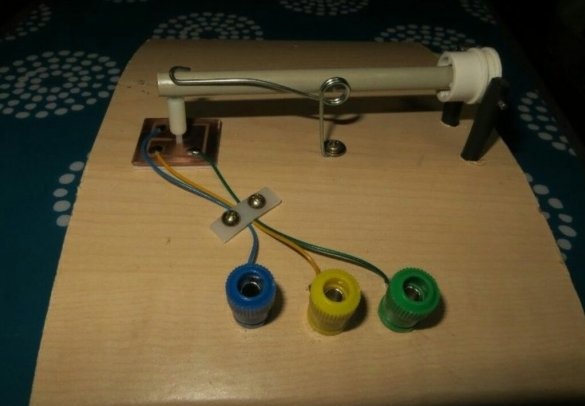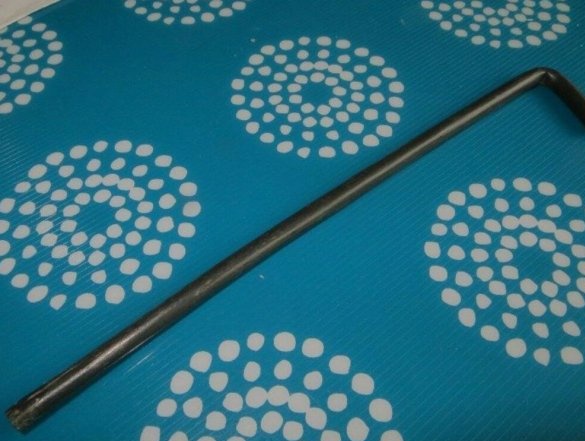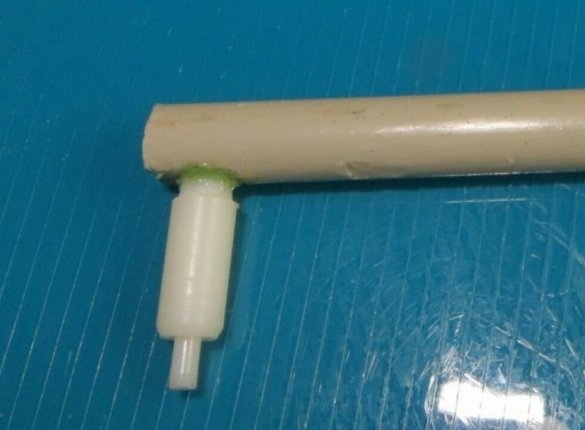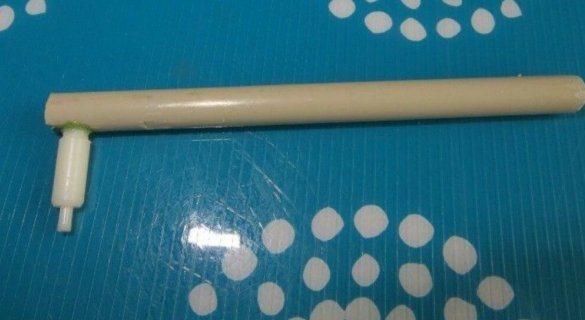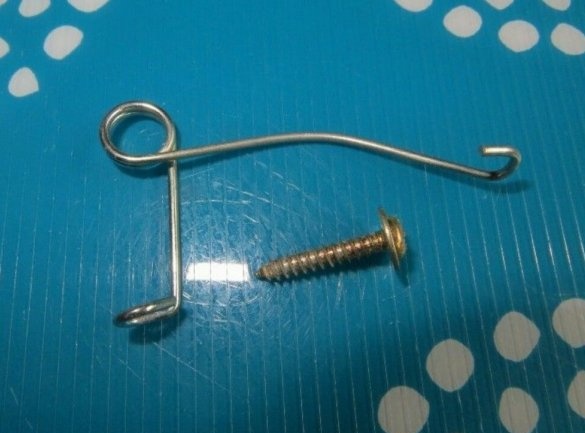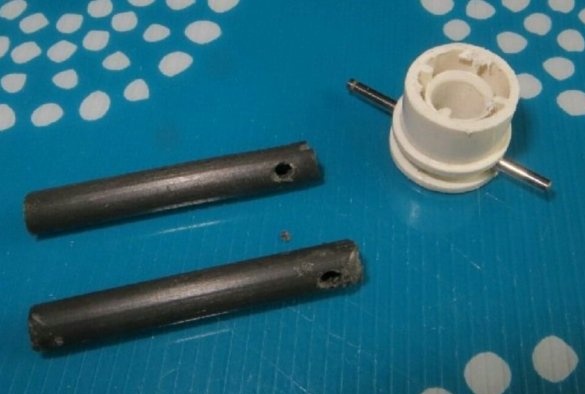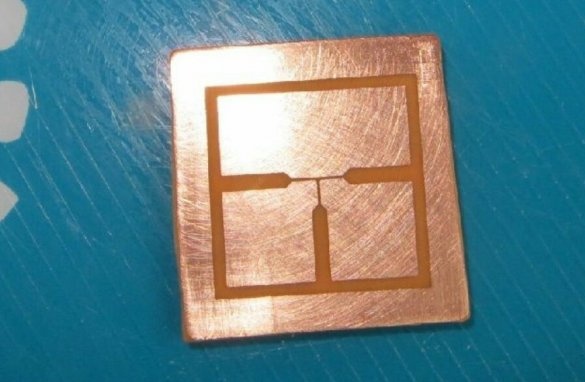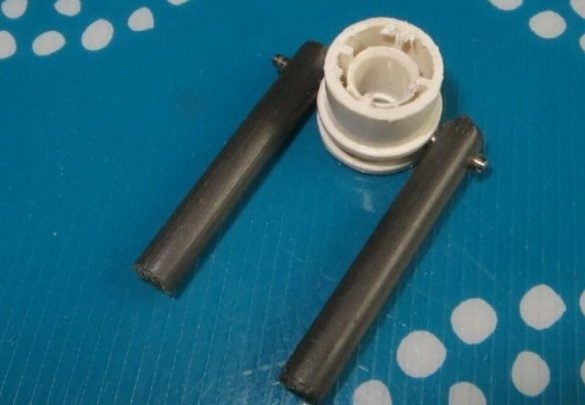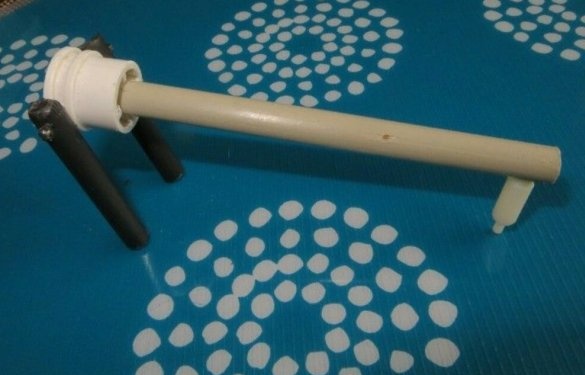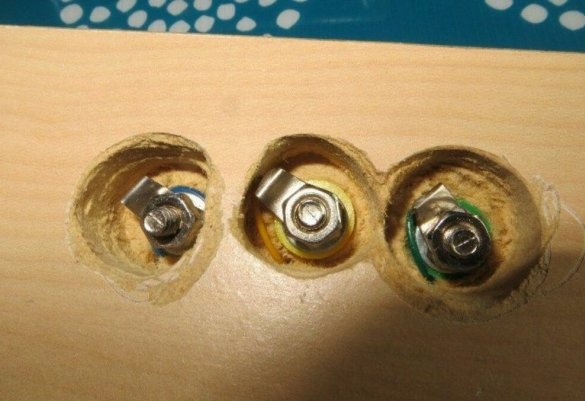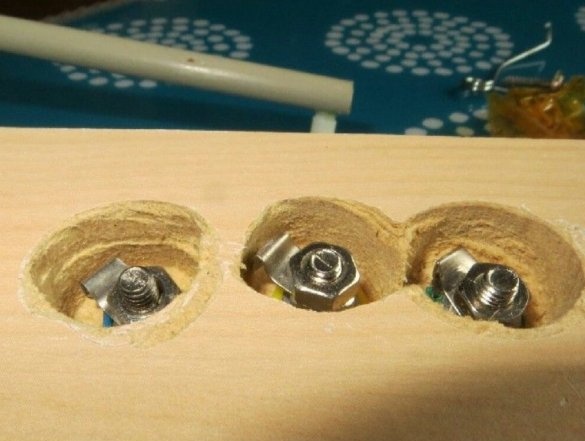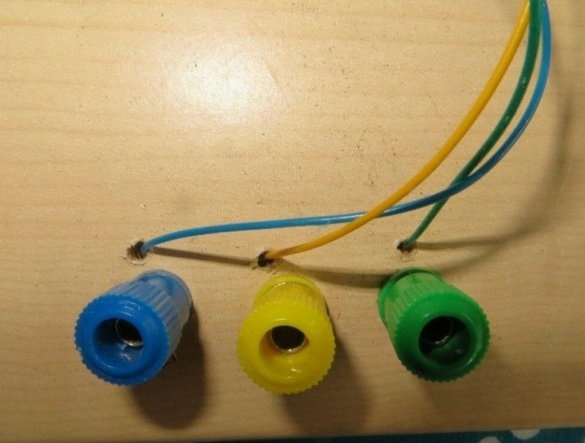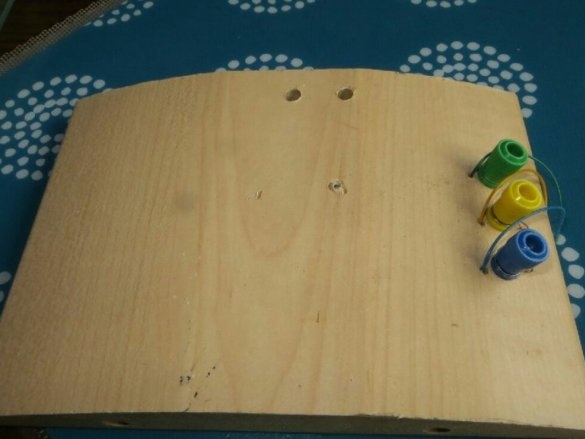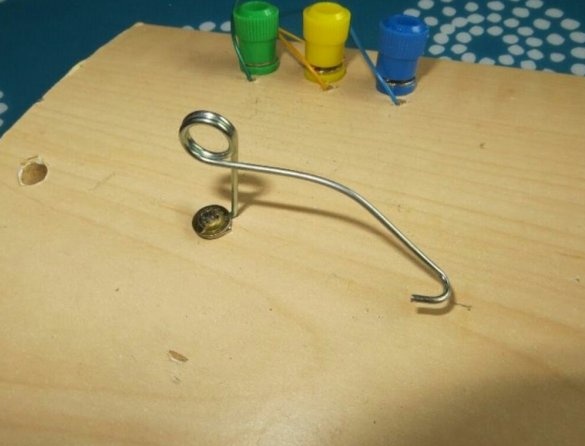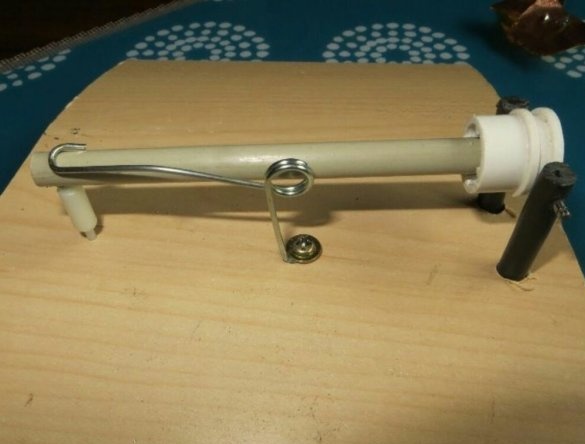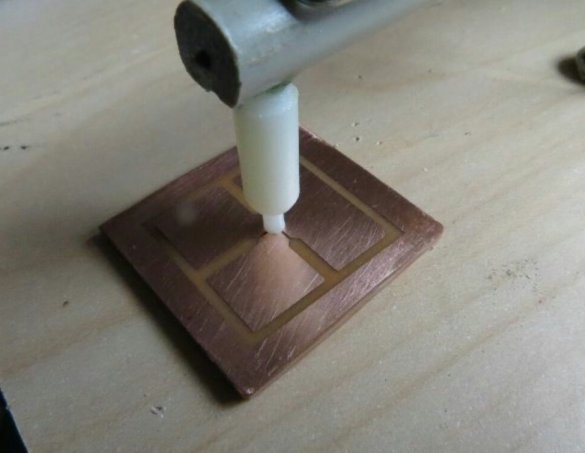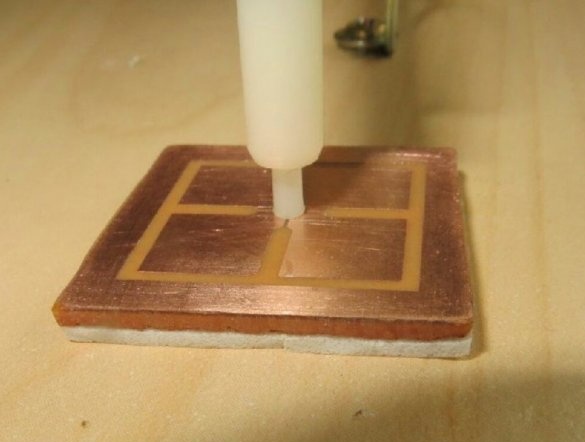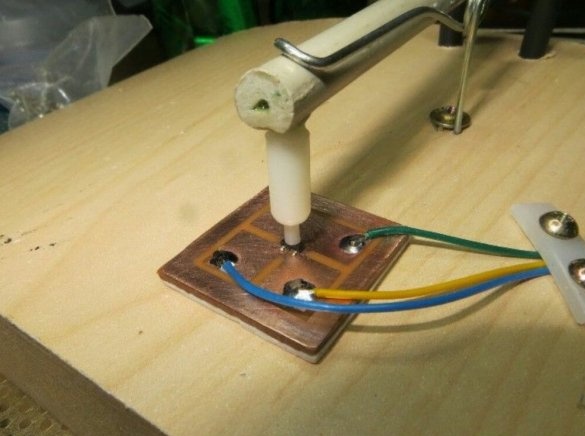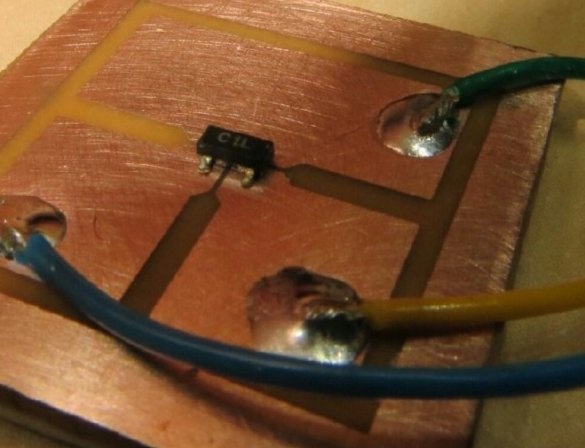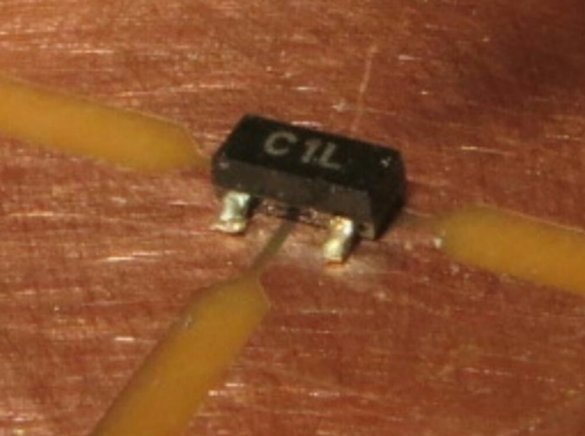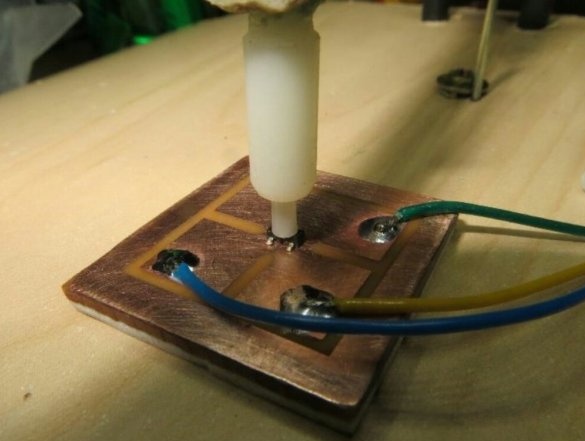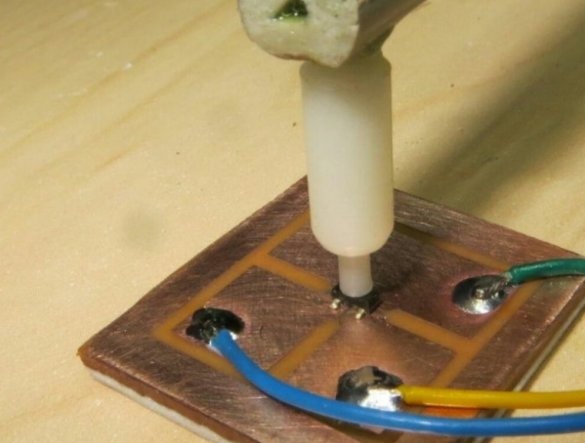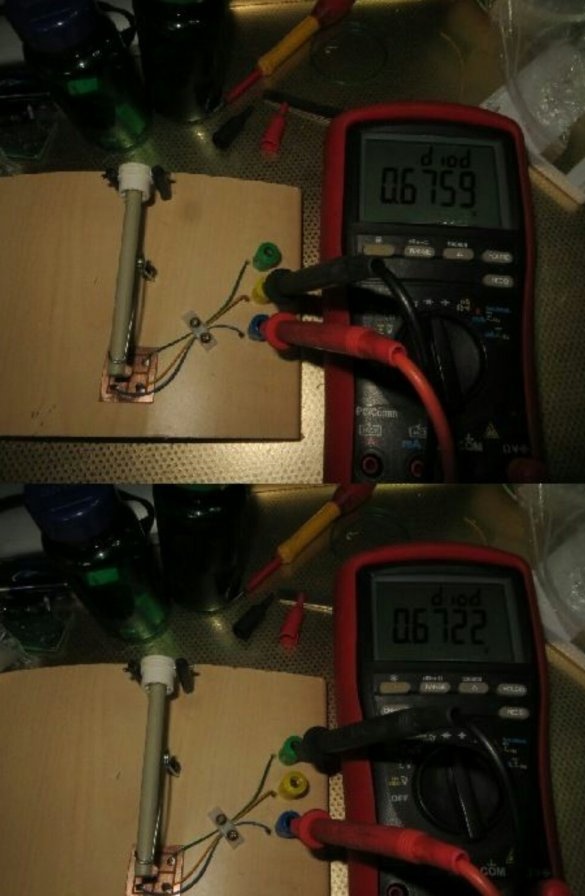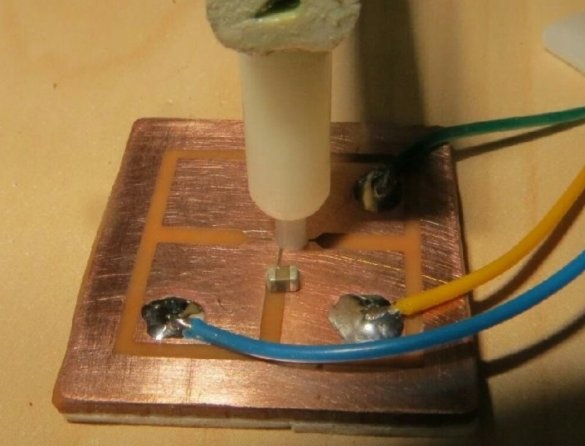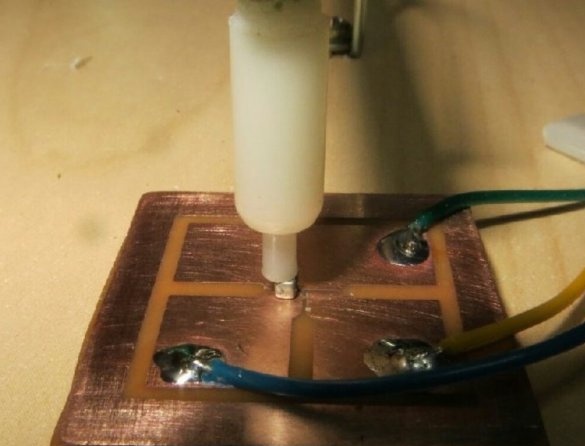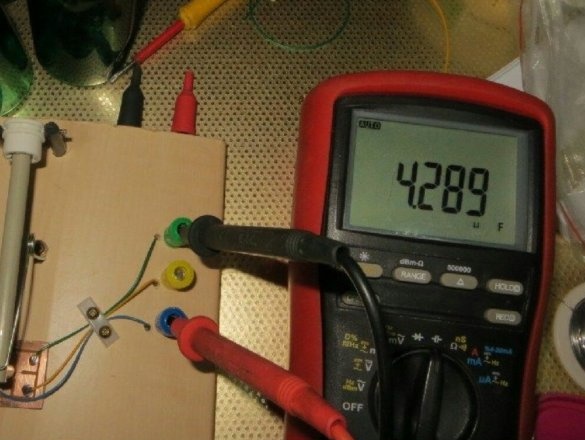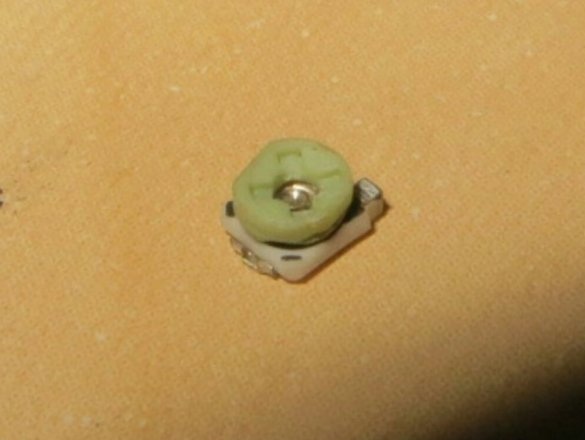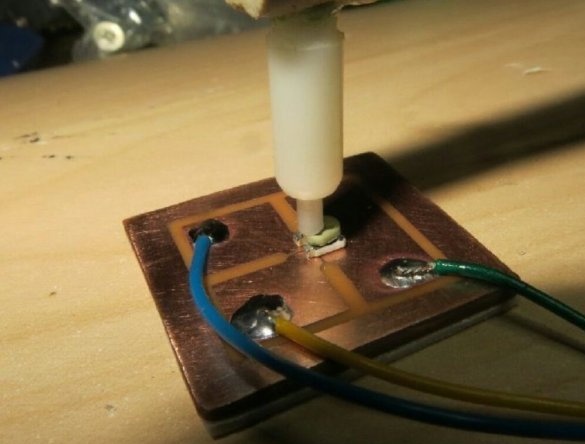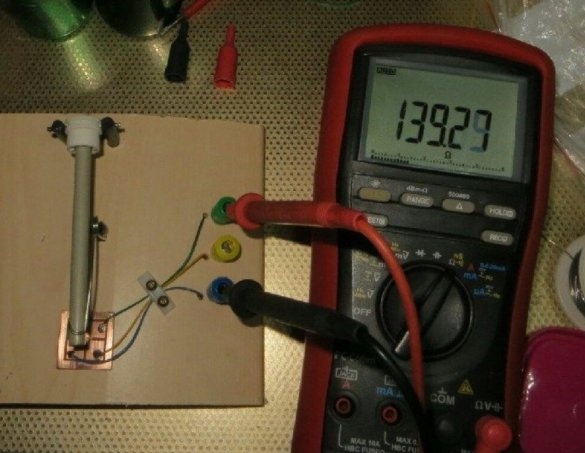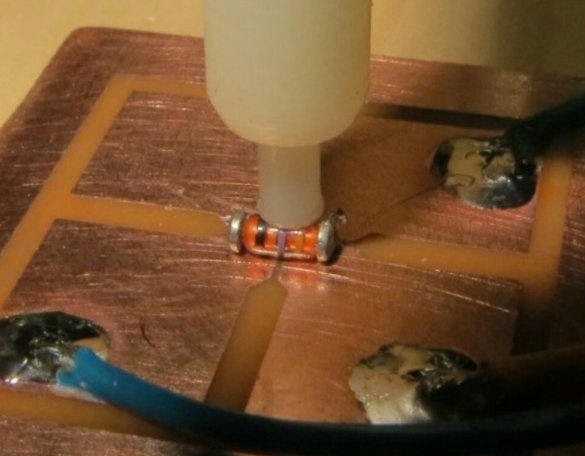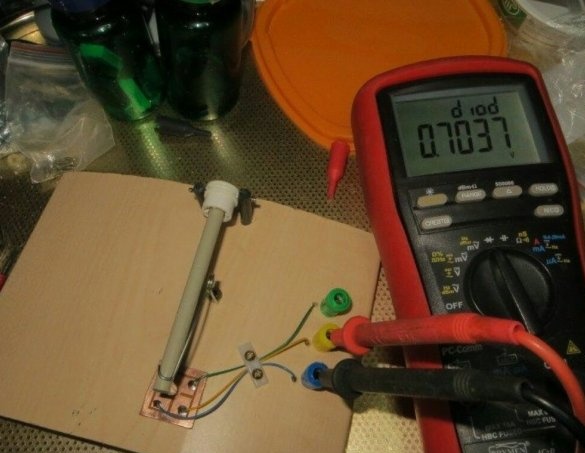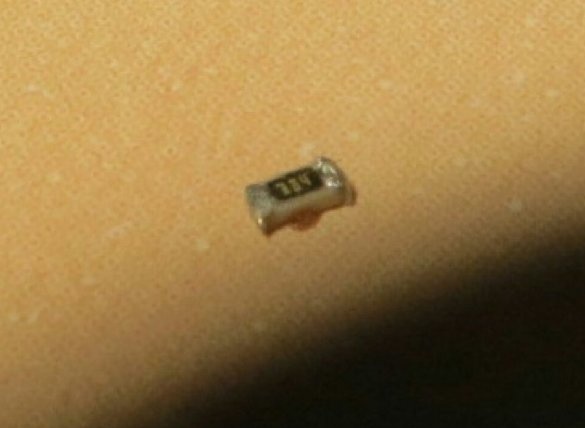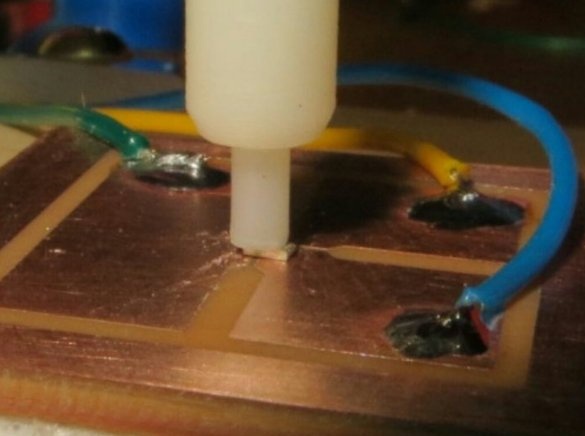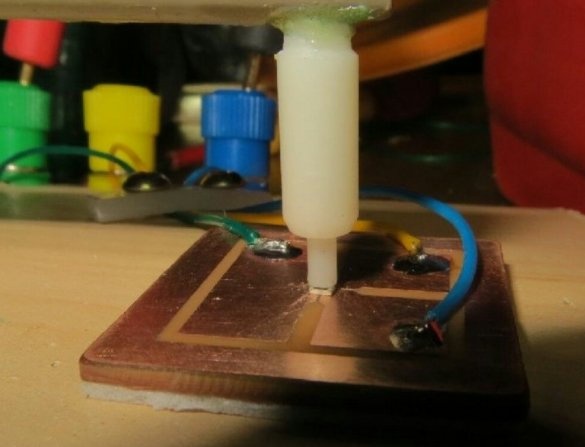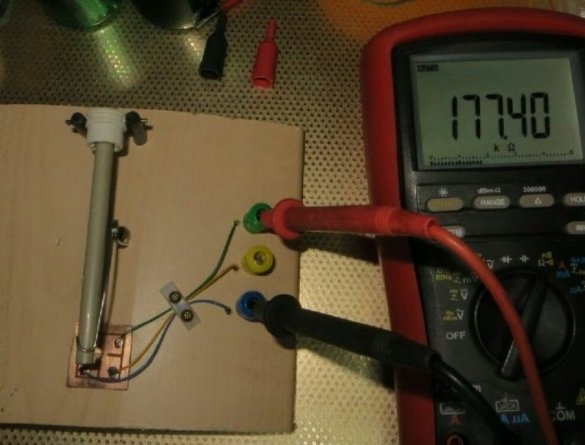Proposed device, manufactured by Instructables under the nickname throbscottle, allows you to connect measuring equipment to two- and three-pin SMD components. To do this, it is enough to place the component on the board on the stand, aligning the leads with the pads on it, fix it with a clip on the spring and connect this or that device to the terminals. Some parts are shown below. homemade, namely, the workpiece from which the axis will be made:
Clamp with a plastic nozzle that does not damage the tested components:
Spring and self-tapping screw for attaching to the base:
Two racks, an axis made of the workpiece shown above, and an adapter for installing the clamp:
Double-sided tape:
And the most important part is the board:
So that it can be repeated, the wizard uploads two PDF files, one of which is required when using a negative photoresist, second it will come in handy if the photoresist is positive. Well, the master starts assembling the structure. Connects racks, an axis and an adapter together:
Adds a clip:
Makes three recesses in the stand and installs the terminals in them:
Screws the spring with a self-tapping screw:
Sets the clamp with racks and adapter and presses it with a spring:
Installs the board in its place:
And connects it with conductors to the terminals, after which it fixes the conductors with a plastic plate on two screws:
Everything is ready, you can start using the design. The wizard starts by checking the transistor. Puts it on the board, combining pins with pads:
Presses:
And measures the direct voltage drop at each of its junctions:
The turn of the capacitor comes:
Such is the total capacitance of the capacitor and the parasitic capacitance of the entire structure. To find out the capacitance of a capacitor only, you need to take another measurement without it, and then subtract the total capacitance from the stray. Oh, the other way around. In general, take the result modulo, and it will not matter.
After making sure that the device is working, the master tests several more components in the SMD version, namely a variable resistor (you have to rotate it by removing it from the device):
Diode:
And a constant resistor:
Such a master turned out to be a useful thing that is useful in any workshop where they work with SMD components, and which can be made in the same workshop.

